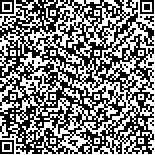| 引用本文: |
黄娟, 王一阳, 肖凡, 刘秀, 喻嵘.左归降糖舒心方调控TLR4/NF-κB通路抑制糖尿病心肌病小鼠心肌纤维化的机制研究[J].湖南中医药大学学报,2024,44(5):729-736[点击复制] |
|
| |
|
|
| 本文已被:浏览 1829次 下载 731次 |
| 左归降糖舒心方调控TLR4/NF-κB通路抑制糖尿病心肌病小鼠心肌纤维化的机制研究 |
| 黄娟,王一阳,肖凡,刘秀,喻嵘 |
| (湖南中医药大学第一附属医院, 湖南 长沙 410007;湖南中医药大学, 湖南 长沙 410208) |
| 摘要: |
| 目的 基于Toll样受体4(Toll-like receptor 4,TLR4)/核因子κB(nuclear factor-κB,NF-κB)信号通路探讨左归降糖舒心方对糖尿病心肌病MKR小鼠心肌纤维化及炎症因子的影响。方法 以8周龄雄性MKR小鼠为实验对象,采用高脂饮食联合腹腔注射链脲佐菌素(streptozotocin,STZ)40 mg/kg构建糖尿病心肌病模型,随机分为中药高剂量组[33.67 g/(kg·d)左归降糖舒心方2 g/mL]、中药低剂量组[16.84 g/(kg·d)左归降糖舒心方2 g/mL]、西药联合组[0.23 g/(kg·d)二甲双胍联合1.5 mg/(kg·d)依那普利]和模型组(等容量蒸馏水);另设FVB小鼠为空白对照组(等容量蒸馏水)。每组10只,连续给药8周后取材。收集尾静脉血液检测空腹血糖水平;采用HE、Masson染色观察心肌病理改变,电镜观察心肌组织超微结构变化;采用ELISA检测小鼠血清肿瘤坏死因子-α(tumor necrosis factor-α,TNF-α)及白细胞介素-1β(interleukin-1β,IL-1β)含量;采用Western blot法检测TLR4、NF-κB p56、p-NF-κB p56/NF-κB p56蛋白表达情况;RT-qPCR及Western blot检测小鼠心肌组织Ⅰ型胶原(collagen type I,Collagen Ⅰ)、Ⅲ型胶原(collagen type Ⅲ,Collagen Ⅲ)及α-平滑肌肌动蛋白(α-smooth muscle actin,α-SMA)的表达水平。结果 与空白对照组比较,模型组小鼠空腹血糖及血清中TNF-α、IL-1β含量增高(P<0.01);心肌细胞结构紊乱,胶原含量增加,心肌细胞重度退行性变;心肌组织中TLR4、NF-κB p56、p-NF-κB p56/NF-κB p56蛋白表达上调(P<0.01),Collagen Ⅰ、Collagen Ⅲ、α-SMA mRNA及蛋白表达增加(P<0.05,P<0.01),中药高剂量组小鼠心肌组织Collagen Ⅰ、Collagen Ⅲ蛋白表达增加(P<0.01)。与模型组比较,中药高、低剂量组和西药联合组小鼠空腹血糖及血清中TNF-α、IL-1β含量均降低(P<0.01);心肌结构改善,胶原沉积减少;心肌组织中TLR4、NF-κB p56、p-NF-κB p56/NF-κB p56蛋白表达下调(P<0.01),Collagen Ⅰ、Collagen Ⅲ、α-SMA蛋白及mRNA表达下调(P<0.01)。与西药联合组比较,中药低剂量组小鼠空腹血糖及血清中TNF-α、IL-1β含量均升高(P<0.01),心肌结构无明显改善,胶原沉积无显著减少;心肌组织中TLR4、NF-κB p56、p-NF-κB p56/NF-κB p56蛋白表达上调(P<0.01),Collagen Ⅰ、Collagen Ⅲ、α-SMA蛋白及mRNA表达上调(P<0.01)。结论 左归降糖舒心方能抑制心肌炎性反应、改善心肌细胞结构,其作用机制可能与调控TLR4/NF-κB通路、下调细胞炎症因子表达、抑制心肌纤维化有关。 |
| 关键词: 左归降糖舒心方 心肌纤维化 炎性反应 TLR4/NF-κB通路 MKR鼠 糖尿病 |
| DOI:10.3969/j.issn.1674-070X.2024.05.003 |
| 投稿时间:2023-11-01 |
| 基金项目:国家自然科学基金面上项目(82074400);湖南省重点研发计划项目(2020SK2101);湖南省教育厅科研项目(20K094);湖南省自然科学医卫行业联合基金项目(2024JJ9436)。 |
|
| Mechanism of Zuogui Jiangtang Shuxin Formula in inhibiting myocardial fibrosis in mice with diabetic cardiomyopathy by regulating TLR4/NF-κB pathway |
| HUANG Juan, WANG Yiyang, XIAO Fan, LIU Xiu, YU Rong |
| (The First Hospital of Hunan University of Chinese Medicine, Changsha, Hunan 410007, China;Hunan University of Chinese Medicine, Changsha, Hunan 410208, China) |
| Abstract: |
| Objective To investigate the effects of Zuogui Jiangtang Shuxin Formula (ZGJTSXF) on myocardial fibrosis and inflammatory factors in MKR mice with diabetic cardiomyopathy (DCM) based on the Toll-like receptor 4 (TLR4)/nuclear factor-κB (NF-κB) signaling pathway. Methods Male MKR mice aged 8 weeks were used as experimental subjects. A diabetic cardiomyopathy model was established using a high-fat diet combined with intraperitoneal injection of streptozotocin (STZ) 40 mg/kg. The mice were randomized into high- [33.67 g/(kg·d)] and low-dose [16.84 g/(kg·d)] ZGJTSXF groups (containing raw medicinals 2 g/mL), western medicine combination group [metformin 0.23 g/(kg·d) combined with enalapril 1.5 mg/(kg·d)], and model group (equal volume of distilled water); additionally, FVB mice were set as the blank control group (equal volume of distilled water). Each group consisted of 10 mice and samples were collected after 8 weeks of continuous medication. Tail vein blood was collected to test fasting blood glucose levels. Myocardial pathological changes were observed using HE and Masson's trichrome staining, and ultrastructural changes in the myocardial tissue were examined with electron microscopy. ELISA was used to measure the content of tumor necrosis factor-α (TNF-α) and interleukin 1β (IL-1β) of the mice serum. Western blot was used to check the protein expressions of TLR4, NF-κB p56, and p-NF-κB p56/NF-κB p56. RT-qPCR and Western blot were employed to measure the expression levels of collagen type Ⅰ (Collagen Ⅰ), collagen type Ⅲ (Collagen Ⅲ), and α-smooth muscle actin (α-SMA) in the myocardial tissue of mice. Results Compared with the blank control group, the model group showed increased fasting blood glucose and serum levels of TNF-α and IL-1β (P<0.01), accompanied by myocardial cell structural disorder, increased collagen content, and severe myocardial cell degeneration; the protein expressions of TLR4, NF-κB p56, and p-NF-κB p56/NF-κB p56 were upregulated in the myocardial tissue (P<0.01), and the mRNA and protein expression levels of Collagen Ⅰ, Collagen Ⅲ, and α-SMA were elevated (P<0.05, P<0.01). Compared with the model group, the high- and low-dose ZGJTSXF groups and the western medicine combination group showed reductions in fasting blood glucose and serum levels of TNF-α and IL-1β (P<0.01), improved myocardial structure, and decreased collagen deposition; the protein expressions of TLR4, NF-κB p56, and p-NF-κB p56/NF-κB p56 were downregulated in the myocardial tissue (P<0.01), as well as the protein and mRNA expressions of Collagen Ⅰ, Collagen Ⅲ, and α-SMA (P<0.01). Compared with the western medicine combination group, the low-dose ZGJTSXF group exhibited increased fasting blood glucose and serum levels of TNF-α and IL-1β (P<0.01), with no noticeable improvement in myocardial structure and no obvious reduction in collagen deposition; the protein expressions of TLR4, NF-κB p56, and p-NF-κB p56/NF-κB p56 were upregulated in the myocardial tissue (P<0.01), along with increased protein and mRNA expressions of Collagen Ⅰ, Collagen Ⅲ, and α-SMA (P<0.01). Conclusion ZGJTSXF may inhibit myocardial inflammatory response and improve myocardial cell structure. Its mechanism of action may be related to the regulation of TLR4/NF-κB pathway, down-regulation of cellular inflammatory factor expression, and inhibition of myocardial fibrosis. |
| Key words: Zuogui Jiangtang Shuxin Formula myocardial fibrosis inflammatory response Toll-like receptor 4/nuclear factor-κB pathway MKR mice diabetes |
|

二维码(扫一下试试看!) |
|
|
|
|




